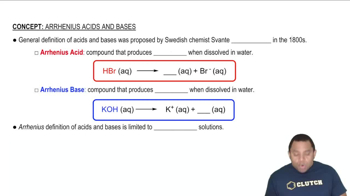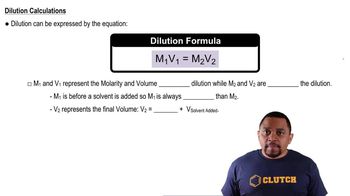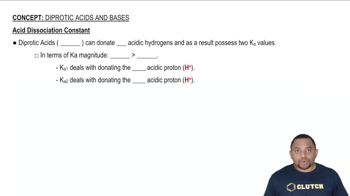Here are the essential concepts you must grasp in order to answer the question correctly.
Acid-Base Chemistry
Acid-base chemistry involves the study of proton donors (acids) and proton acceptors (bases). In this context, HCl is a strong acid that completely dissociates in solution to produce H3O+ ions, while H2SO4 is a diprotic acid that can donate two protons. Understanding how these acids dissociate is crucial for calculating the concentrations of H3O+ and SO4^2- in the mixed solution.
Recommended video:
Arrhenius Acids and Bases
Concentration and Dilution
Concentration refers to the amount of solute present in a given volume of solution, typically expressed in molarity (M). When mixing solutions of different concentrations, the final concentration can be determined using the dilution equation, which accounts for the volumes and concentrations of the original solutions. This concept is essential for calculating the resulting concentrations after mixing HCl and H2SO4.
Recommended video:
Equilibrium and Ka Values
The acid dissociation constant (Ka) quantifies the strength of an acid in solution, indicating the extent to which it donates protons. For H2SO4, the first dissociation is strong, while the second dissociation is characterized by a much smaller Ka value (1.2 * 10^-22). Understanding these dissociation constants is vital for determining the concentrations of the resulting ions, such as SO4^2-, in the solution.
Recommended video:
Ka values of Diprotic Acids
 Verified step by step guidance
Verified step by step guidance


